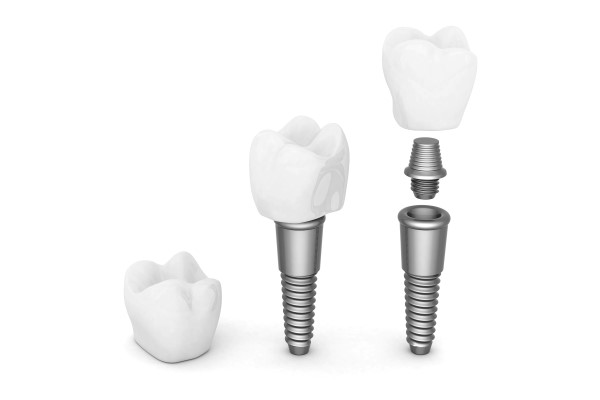Replacing Missing Teeth – Timeline for Dental Implants

If the dentist has recommended getting dental implants, you might want to know what goes into the process and the treatment timeline. Dental implants are a long-term solution when a tooth is missing and offer great aesthetic appeal. Dental implants are more complex and time-consuming than dental bridges or dentures. This article contains a quick overview and guide to the full dental implant implantation procedure and the timeline.
Depending on different circumstances, a dental implant procedure may take anywhere from a few months to more than a year to complete. The length of the dental implant timeline may be affected by factors including one's health, habits, and lifestyle.
An overview of dental implants
It is possible to replace missing or damaged teeth with dental implants, which look and function much like natural teeth. They use titanium screw-like posts to replace lost dental roots. These posts join to an abutment that connects the crown to the implanted post. Implants are screwed into the jawbone, making them more stable than dentures or bridges and preventing them from sliding or creating sounds. As the jawbone integrates with the posts, it prevents further bone loss and maintains the face's natural shape.
Dental implants timeline
Dental implants take between three to four months to complete, unless bone grafting is required. Dental implant operations might take a longer time to complete, depending on the healing period. The procedure for placing dental implants takes several appointments, which is conducted in phases and tailored to the patient's specific requirements.
Initial consultation
Getting dental implants begins with a no-obligation consultation to see whether they are a good option. Patients will meet with the dentist to discuss their existing dental conditions, medical history, and intended result during this appointment. Following that, they will have a full dental exam, including X-rays, 3-D pictures, and imprints of the mouth and jaw. As the last step, the dentist will go through the treatment plan and any necessary approvals for surgery, such as from the patient's doctor.
Upon meeting all pre-surgery prerequisites, the dentist will detail each dental implant process. Dental implant phases, techniques, expected timetable, and recovery instructions will be discussed. Some patients may need treatment from more than one dental professional. The first of several phases of dental implants may begin when a personalized treatment plan has been created.
Dental implants – bone grafting and teeth extractions
Bone grafting may not be necessary for every dental implant timeline, but it is the preliminary step if it is. A dentist may perform a bone transplant if the patient's jawbone is not strong enough to support an implant. Teeth removal may also be required in case of decay or infection. Both operations need a local anesthesia, and the gums will take between four and six months for recovery.
Placing the implants
The following step is implant placement, which entails anchoring the implant with metal screws inserted into the jaw. The process takes between one to two hours and requires a local anesthesia. Healing might take three to four months after this treatment.
Placing the temporary crown and the healing cap
It is time to affix the healing collar and any temporary crowns that have already healed and fused with the jawbone. An implant's healing cap is affixed to aid the gum tissue's recovery. The gums will hardly inhibit the implant until the healing cap is removed after two weeks.
Abutment
The abutment will be attached to the implant to hold the crown in place during the dental implant timeline. An abutment will be screwed onto the implant when they open up the gums to reveal the implant. The dentist places a temporary crown over it to prevent the gums surrounding the abutment from becoming infected.
Placing the dental restoration
To prepare for the implant crown process, the dentist takes imprints of the patient's mouth after healing is complete. Durable material is used to construct the fixed crown, which is custom shaded to match the surrounding natural teeth, and then screwed or cemented to each implant abutment.
In conclusion
As with every surgical procedure, dental implants placement has certain risks, so it is crucial to go to a reputed dental care facility with experienced professionals. Book an appointment today to get started.
Request an appointment here: https://www.smilesbyjulia.com or call Smiles By Julia at (954) 493-6556 for an appointment in our Fort Lauderdale office.
Check out what others are saying about our dental services on Yelp: Dental Implants in Fort Lauderdale, FL.
Related Posts
Dental implants can bring back stability and aesthetic value to your mouth. Losing at least one tooth can affect your appearance. It can also affect the way you interact with other people. Getting implants is a big decision. That is why you need to know what the procedure entails. Here are the things you should…
Most people want to have dental implants right after dental extraction. Replacing the lost tooth is a priority. This can prevent more complications as the mouth heals. Understanding the process of getting implants after dental extraction can help prepare you for your appointment. Here are the details about getting dental implants after a dentist removes…
Dental implants are long-lasting, permanent tooth replacements. They are a popular choice among patients for their durability and ability to look and feel like natural teeth. However, dental implants are an investment, and they should be cared for as such. Follow the tips below to help extend the life span of your implants and prevent…
Dental implants are effective, long-lasting artificial teeth. Implants are surgically attached to the jawbone to look and function like natural teeth. As a result, patients can chew, talk, and laugh without worrying about dentures slipping. They also improve oral health. This article explores when and why to get implants and the qualifying factors for treatment.Patients…
